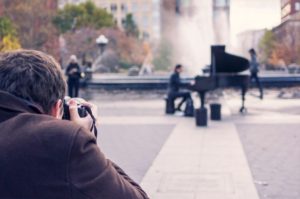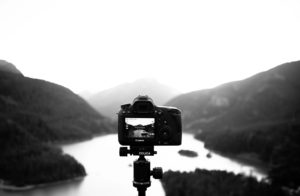Admin Note: Our trusty admin assistant has put together a list of resources and guidelines for using and crediting photos in the public realm. (Thanks, Lynne!)
Images released under Creative Commons CC0 are free of copyrights. You may download, modify, distribute, and use them royalty free for anything you like, even in commercial applications. Attribution is not required.
If you are unsure if the image was released under CC0, indicate the photo’s source, and whether it was purchased or provided as a courtesy.
Getty Images – You can use Getty Images if you follow their embed instructions: Embedding their images provides a legal way to utilize premium content while respecting creators’ rights, including the opportunity to generate licensing revenue.
http://www.gettyimages.com/resources/embed
Unsplash – Free (do whatever you want) high-resolution photos. Unsplash grants you a nonexclusive copyright license to download, copy, modify, distribute, perform, and use photos from Unsplash for free, including for commercial purposes, without permission from or attributing the photographer or Unsplash.
https://unsplash.com
Flickr – Many Flickr users have chosen to offer their work under a Creative Commons license, and you can browse or search through content under each type of license.
https://www.flickr.com/creativecommons

Pixabay – All images and videos on Pixabay are released free of copyrights under Creative Commons CC0. You may download, modify, distribute, and use them royalty free for anything you like, even in commercial applications. Attribution is not required
https://pixabay.com

Pexels – Best Free Stock photos in one place. Issued under Creative Commons CC0. You may download, modify, distribute, and use them royalty free for anything you like, even in commercial applications. Attribution is not required.
https://www.pexels.com
Wikimedia.org – a collection of 39,727,644 freely usable media files to which anyone can contribute – Almost all content hosted on Wikimedia Commons may be freely reused subject to certain restrictions (in many cases). You do not need to obtain a specific statement of permission from the licensor(s) of the content unless you wish to use the work under different terms than the license states.
- Content under open content licenses may be reused without any need to contact the licensor(s), but just keep in mind that:
- some licenses require that the original creator be attributed;
- some licenses require that the specific license be identifiedwhen reusing (including, in some cases, stating or linking to the terms of the license);
- some licenses require that if you modify the work, your modifications must also be similarly freely licensed; and finally.
https://commons.wikimedia.org/wiki/Main_Page
Shutterstock – Discover over 125 million royalty-free images, video clips and music tracks.
Shutterstock.com – free images and some for purchase.
Istock – Photos for purchase.
http://www.istockphoto.com/plans-and-pricing

Thanks, Kathryn and Lynne, for this useful reference! I’m always on the lookout for new sources of photos under CC0.
Is there a proper way to attribute a photo in a blog? In Word Press, there’s a caption option. If you’re not writing the blog in WP, but, say, as a .txt or .rtf file, do you put the attribution in the text?
Always appreciate your help, Lynne!
I’ll have to defer to other folks for specific questions not covered by Lynne today–hopefully others can share their wisdom!
I use Big Stock Photos. Have you ever used Big Stock? They are not free, but the cost is minimal. Because I purchased them, I did not think they needed an attribution. I hope that’s right!
Thanks for this information!
Here’s BigStock’s usage agreement: https://www.bigstockphoto.com/usage.html
Under Credit Attributions and Copyright Notices, it says:
Credit Attributions and Copyright Notices
A) You shall provide a link back to http://www.Bigstock.com (where applicable) -OR- provide a credit to the Bigstock contributor and to Bigstock in connection with the use of any Content in an editorial context. Such credit shall be in substantially the following form: “Name of Artist/Bigstock.com”
B) In the event that any Contentis used in connection with a film, television broadcast, documentary or other audio-video or multimedia project, you shall use reasonable commercial efforts to accord the Bigstock contributor and Bigstock a credit as provided above.
C) Notwithstanding the foregoing, unless any other provider of stock media is credited, credit attributions are not required in connection with the use of Images in advertising.
D) The unintentional omission of the aforesaid credit will not be a breach of the terms hereof provided that you cure such omission following email notice from Bigstock.
The agreement also says that, if you let your account lapse, you lose all right to use any of these images. Basically, you’ll have to remove them from your website or anywhere else you’ve used them. (I’m not a lawyer, though, and this is my interpretation, only.)
(I’m a bit of a legal hound – I love legalese and I like to know exactly what my rights and responsibilities are when entering into a contract like this.)
Wow. Thanks. I’ve now bookmarked most of these – and this blog post – for future use. Great work, and so useful!
Thanks, Kathryn and Lynne!
If you use Google to search for an image, click on Tools then usage rights. You can then get filtered results. BUT, check the image first. Some free to use images are not once you get to the actual image.
How to credit differs on each image. Flikr and Pixabay have easy to follow instructions on the page.
Flikr usage rights differ by user and maybe by image. Check every time.
For one web project, there was a perfect image. It was from a fire department’s copyrighted web page. I asked the webmaster and explained the use. He sent me permission. It is the house fire in the FIRE and ASHES banner at elaineviets.com. The picture is from the Washington Fire Co. #1
of Mechanicsburg, Pa.
Thanks for the article. This is something I’d not thought about. In the blog I’m currently creating, about escaping the USA for awhile and living and loving in a small Pueblo of Mexico, I’m using all my own photos, each taken along my daily walks. I didn’t think to give myself credit, but I suppose I should (once the blog goes live)? If anyone has advice about giving oneself the credit, let me know. Maybe it’s just as easy as writing my name at each photograph?
I don’t know all the legal information around this, but I think the first step is to note the pictures with a copyright notice in your name. If you don’t want people to use them at all, I believe there are ways to protect images from being downloaded. If you’re okay with people using them if they ask, or if you want to charge for downloads, you can mention this on your contact page. Check out other websites that post their own pictures to see how they do it. Consult with a lawyer well-versed in copyright with particular questions. Legally, your images are covered by copyright. But that won’t stop a lot of people from stealing your pictures online.
Pingback: Top Picks Thursday! For Writers & Readers 07-27-2017 | The Author Chronicles
Hi Kathryn,
Thanks for crafting such a great article. Have you also check out rawpixel.com? We are also giving away amazing images, vectors and psd for free.
Cheers,
Tip